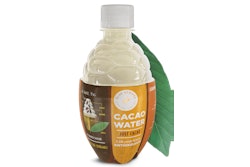Quick hits:
- Why it’s important to include a minimum payload in your testing
- Test with pre-conditioned product and dry ice or PCMs to get an accurate picture.
- The test lab should not define acceptance criteria—that is up to end user discretion.
- What tips and tricks can food and beverage companies requiring cold chain learn from pharma?
Related to this episode:
- Thermal Insulation at Intersection of E-Comm and Sustainability
- Mechanical Testing for Passive Thermal Coolers: Practical Q&A for Life Sciences
- Q&A: The New OQ Standard for Reusable Pharma Shippers
- Download the ISTA passive thermal shipper OQ best practices here
- Keep up with the latest packaging and processing trends by subscribing to the unPACKed with PMMI podcast.
 | Read the transcript below: |
Matt Reynolds: Hello and welcome to another Take Five with Packaging World. Today we have a special report from Keren Sookne, the Director of Editorial content at Healthcare Packaging, on mechanical testing for passive thermal coolers. That means acceptance criteria guidance, payload selection, and more. This is information that may have some application in the food and beverage space, as those areas increase use of a cold chain, e-commerce, and direct to consumer channels. Now, here's Keren.
Keren Sookne: I’m Keren Sookne with Take Five Video.
Today we’re talking all things mechanical testing, so acceptance criteria guidance, payload selection, actual product versus placebo.
To get started, at ISTA’s TempPack Forum in March, experts held an open discussion on mechanical testing requirements, offering both the end user and supplier perspective. Something that came up right away was whether the worst case scenario will always be the maximum payload.
The quick answer to that is no. The most weight doesn’t always mean the worst-case. Small payloads should also be considered and when you go to think about minimum payloads. Don’t overlook the use of dunnage materials in testing because you’ll want to know if they have any effects on shipper performance.
Bayer’s Carmichael Galang brought up an example where all testing had been performed on the max load, and the design had relied to some degree on product cases stacking up to support the top of the container. With a minimum load, dry ice panels could possibly collapse inward. Now, minimum load doesn’t necessarily mean a single product or case, but maybe 20% to 30% of a full load stacked on a pallet.
Next up is acceptance criteria. One customer may feel okay with a cracked shipper as long as the vials are intact, while another user may not accept damage to the shipper at all. This will depend on the brand owner’s discretion. If tape on the outside of a shipper breaks, one company might say it was just one edge and the box remained completely intact so it’s acceptable, another company may say that from a risk level and for presentation purposes they don't find that acceptable.
Galang highlighted new guidance we’ve covered at Healthcare Packaging before, and it’s a mouthful: the ISTA passive thermal shipper OQ best practice. Appendix Four of that document gives some examples of acceptance criteria on the outer box, shell insulation, assembly panels, refrigerants, and other aspects of the mechanical testing.
One key that Carolyn Williamson noted: It’s the end user’s job to know the acceptance criteria and let the lab know. The test labs are the experts in executing the test standard but when it comes to whether or not you passed, that judgment is less to the test lab and more to the end user on what is acceptable.
With life science products, temperature control means coolants or mock products may need to be pre-conditioned, and those protocols must also be communicated with the lab ahead of time. Additionally, dry ice can have affects on materials and should be tested both to ensure temperature remains within specifications and no damage occurs.
While on subject dry ice. Another major note on why dry ice should be included in mechanical testing. In another TempPack session, Jason Mei presented data from Amgen experiments where excessive sublimation cooling of dry ice was observed. This is something that we’ve covered in the past, that orientation can have an effect on thermal excursions. And Jason presented new data this year, showing that you can potentially see super cooling, particularly if the shipper is placed on its side instead of oriented upright.
Moving on to placebo versus actual product, placebo products or simulated product can be used in testing, it is typically where product is still in development. Water-filled syringes can be used, but with justification that the weight and viscosity of the water is similar to the actual product.
While additionally non-active powder products can be used in place of freeze-dried products, if there's a variance between the two—between your simulation and actual product—documentation is key. One of the tests that we look into is the movement of the vial stoppers. So within that mechanical testing, they want to make sure that if the liquids are the same viscosity or weight that that's documented and if they aren't, then that also has to be noted as well.
In the full article, there’s a lot more detail including testing multiple product configurations and Pelican’s Bill Mayer gets into weeds on damage and acceptance criteria. You can check that out at this URL.
Matt Reynolds: Interesting stuff Keren! Thanks for the report. And certainly some lessons in there for food and beverage as well. That's all the time we have for Take Five this week.


























